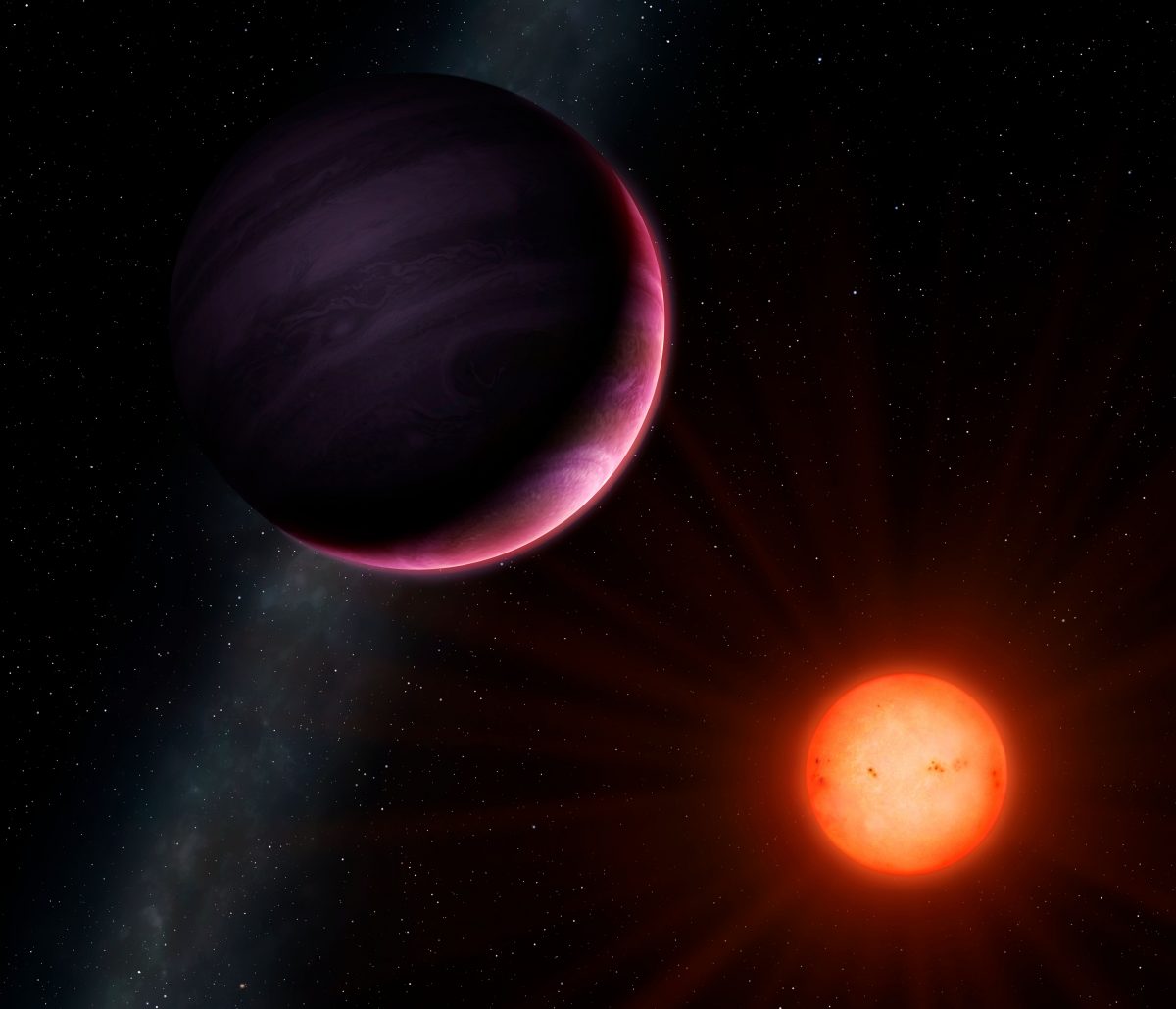Paolo Matteo Simonetti
INAF – Osservatorio Astronomico di Trieste
Sala Seminari Villa Magliola
INAF-OATo
FOLLOW THE ONLINE SEMINAR
Abstract

- Artist’s conception of a the red dwarf star orbited by a distant gas giant planet. Credits: NASA, ESA and G. Bacon (STScI)
In the last three decades more than 5000 exoplanets have been discovered and, especially within the astrobiological community, the hunt for the first detection of atmospheric biosignatures has started. Given the large amount of observational time required to retrieve exoplanetary atmospheric spectra, it is imperative to be able to select beforehand the most interesting targets for this type of follow up. The first two steps in checking the potential habitability of an exoplanet concern its nature (it must have a rocky surface) and its location with respect to its parent star’s Circumstellar Habitable Zone (CHZ). The most widely adopted definition of the CHZ comes from the work of Kopparapu et al. (2013), who employed a single-column radiative transfer model to derive the globally and yearly averaged clear-sky energy balance of a planet possessing either a modern Earth-like atmosphere (for the inner edge) or a CO2-H2O atmosphere (for the outer edge). While this approach allowed these authors to explore a broad range of conditions, it prevented them to study climate transitions caused by the seasonal and latitudinal temperature distribution, by clouds and by climate feedbacks (other than the water-vapor feedback). More detailed studies in this sense have been performed using complex 3D General Circulation Models (GCMs), but due to their very high computational cost they were applied only to specific cases (such as the TRAPPIST-1 system planets). Latitudinal Energy Balance Models (EBMs), coupled with flexible and up-to-date radiative transfer models such as EOS-ESTM (Simonetti et al., 2022, Biasiotti et al. 2022) represents the middle-of-the-road between single-column models and GCMs. As such, they are in the very favorable position of being able to capture the simplest (and strongest) climate feedbacks while being still sufficiently fast to be used to sweep the planetary parameter space relevant for habitability. This allows us to study the position of the inner and outer edges of the CHZ under a broader set of conditions than those explored by Kopparapu et al., e.g. capturing seasonal effects which can influence habitability of eccentric or high obliquity planets that are usually not considered. In this seminar I will show some early results of the analysis that we performed using EOS-ESTM, together with more specific applications to a few Super-Earths lying in the proximity of the outer edge and whose orbital parameters are not well constrained.
